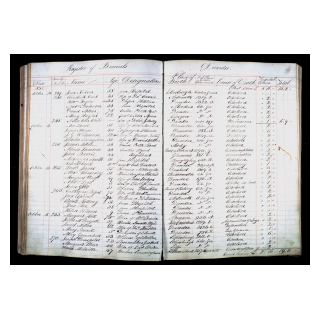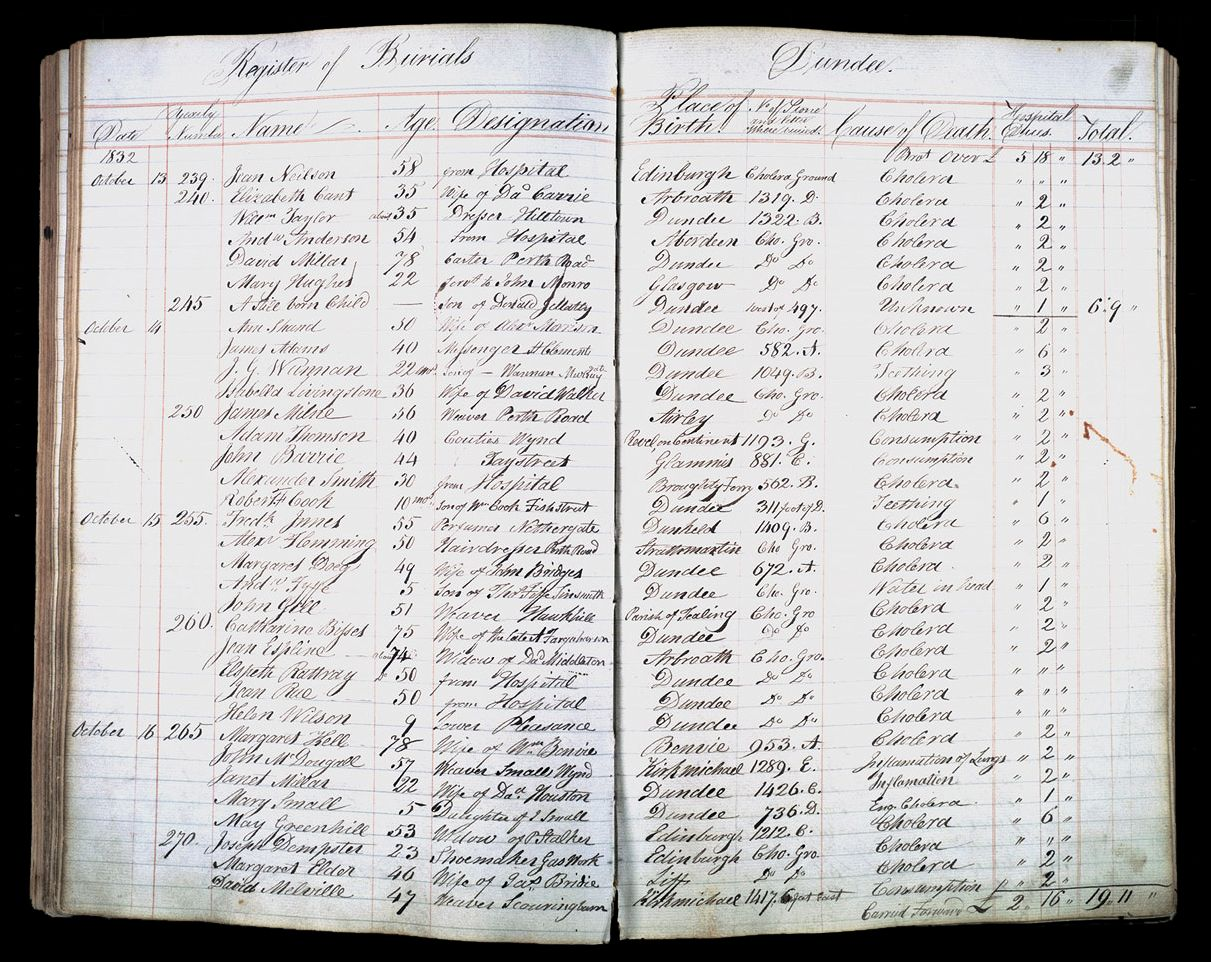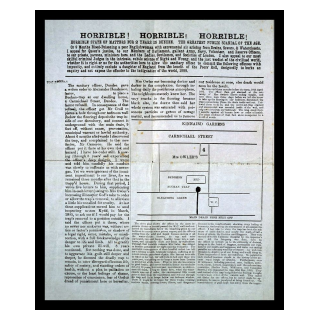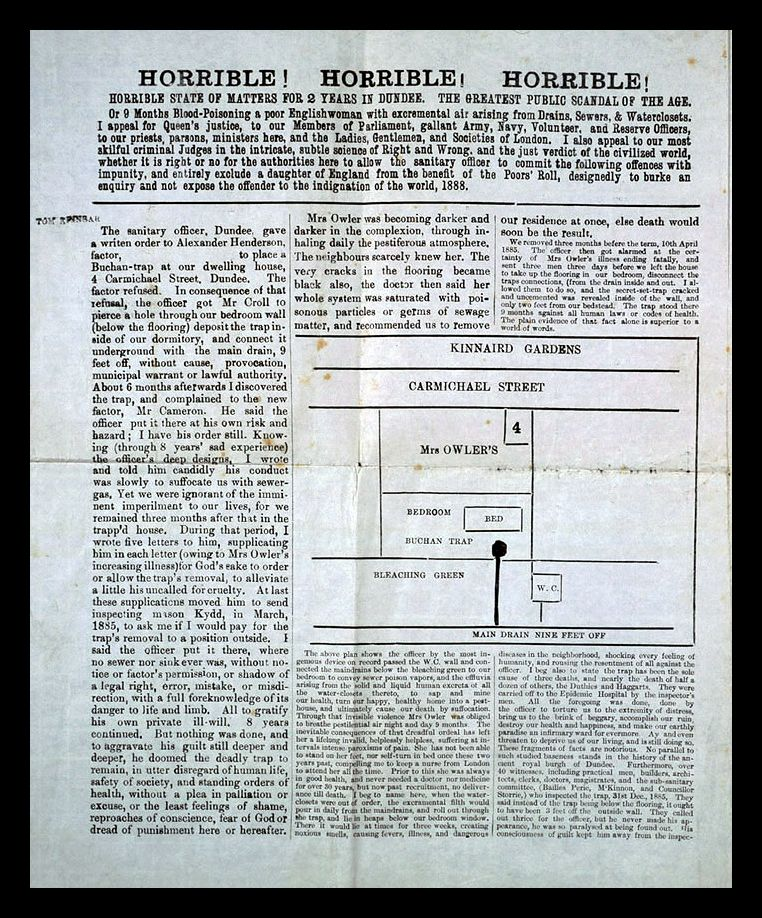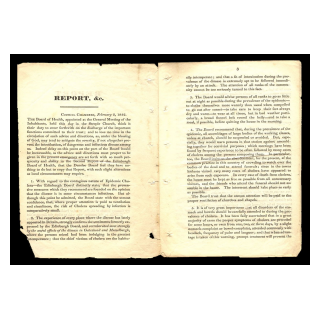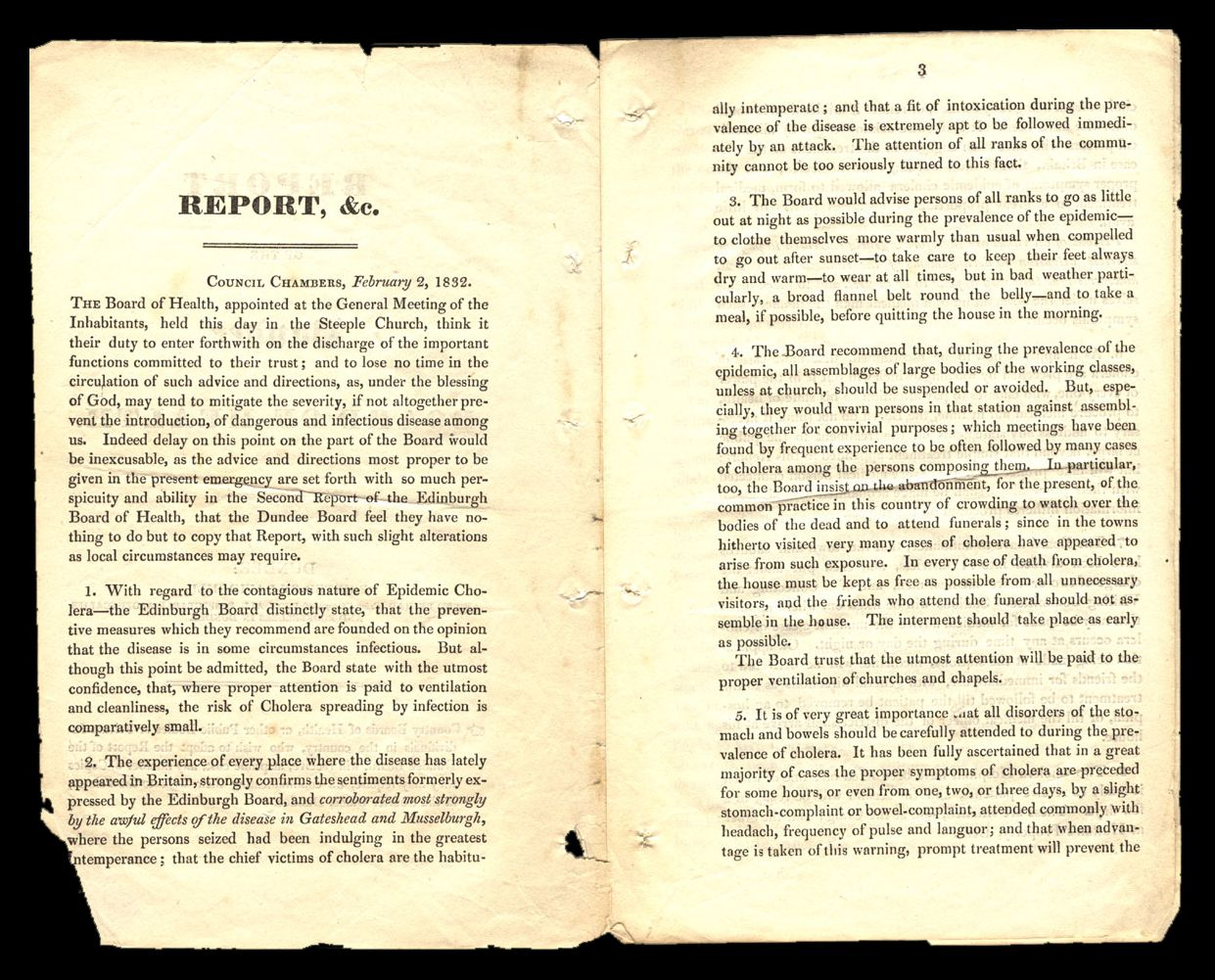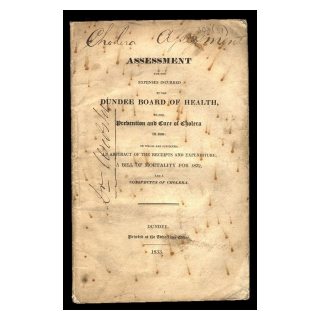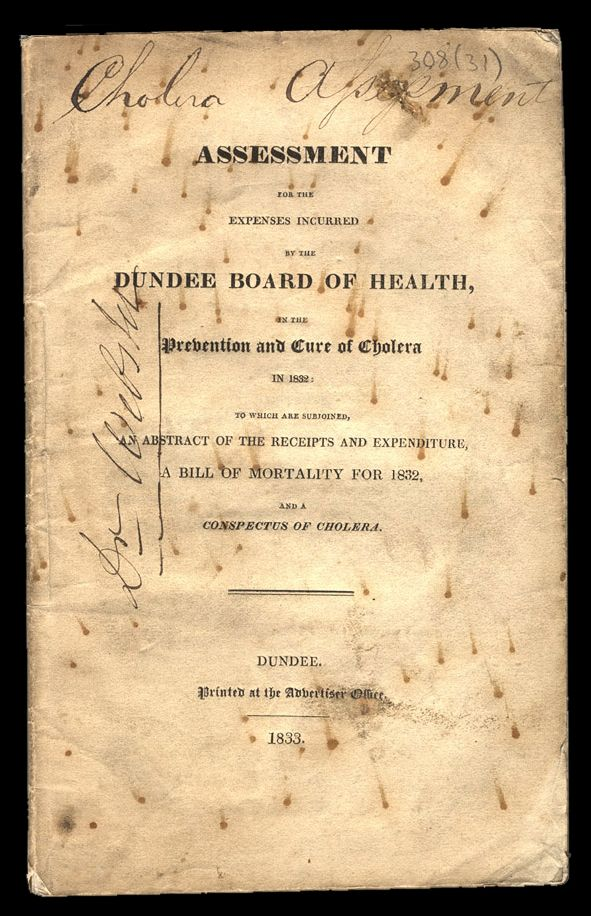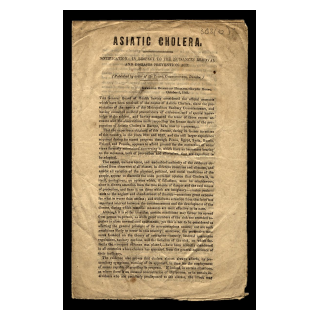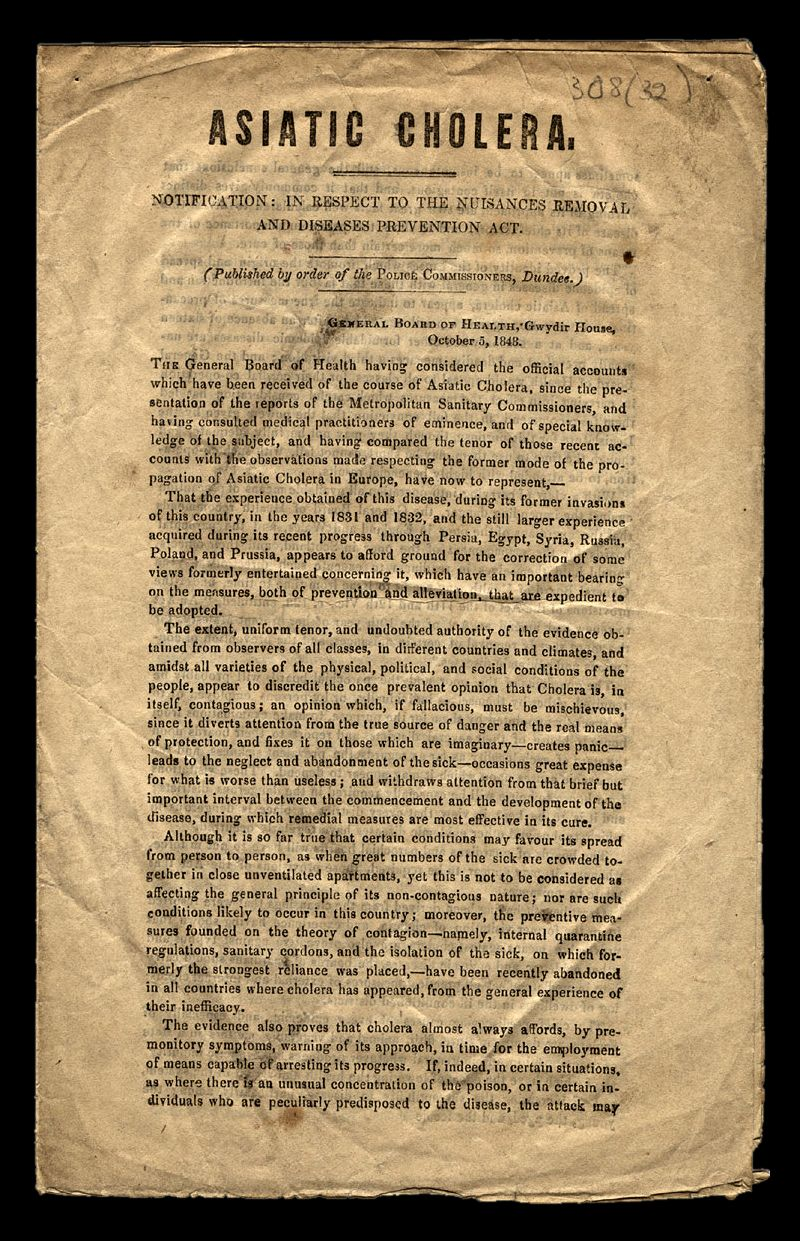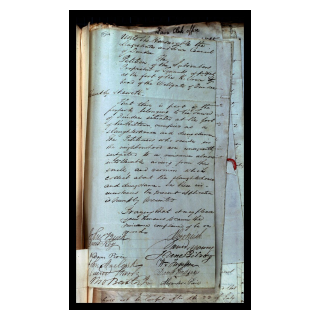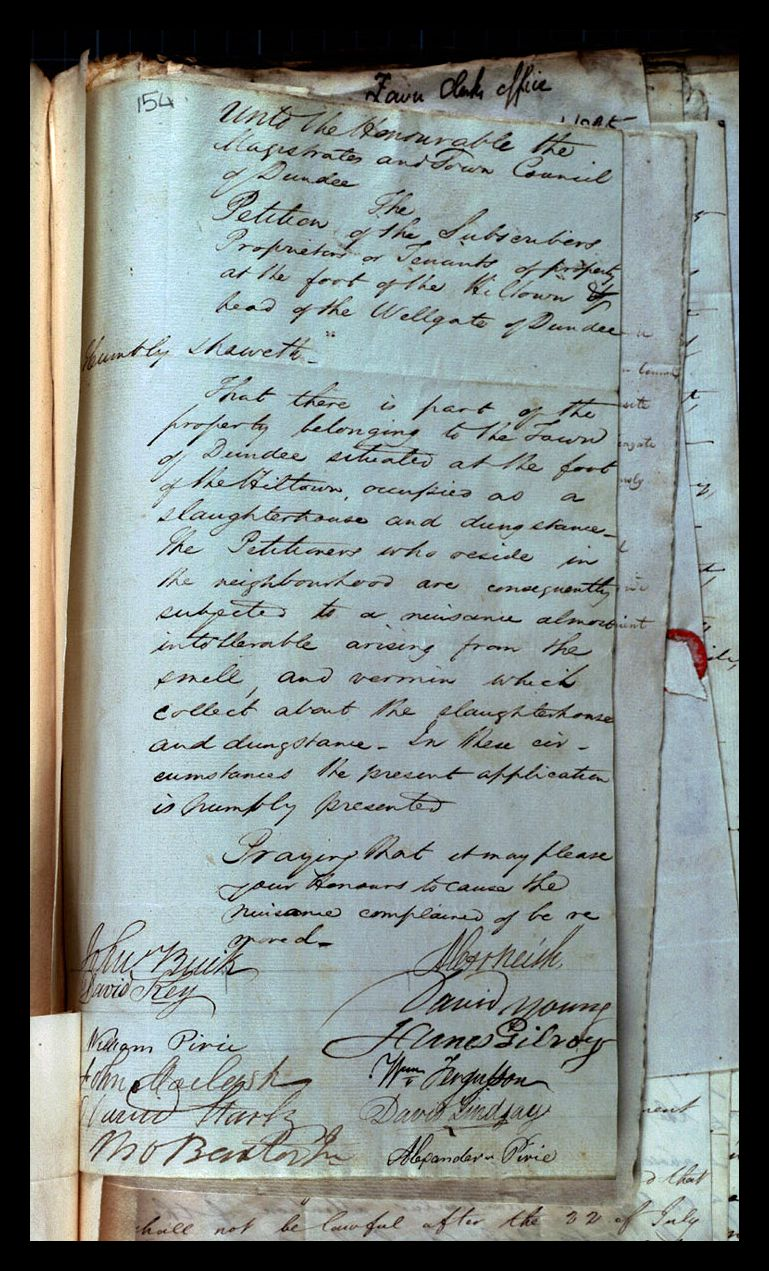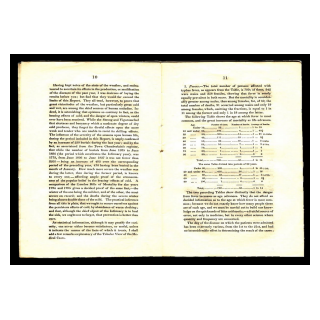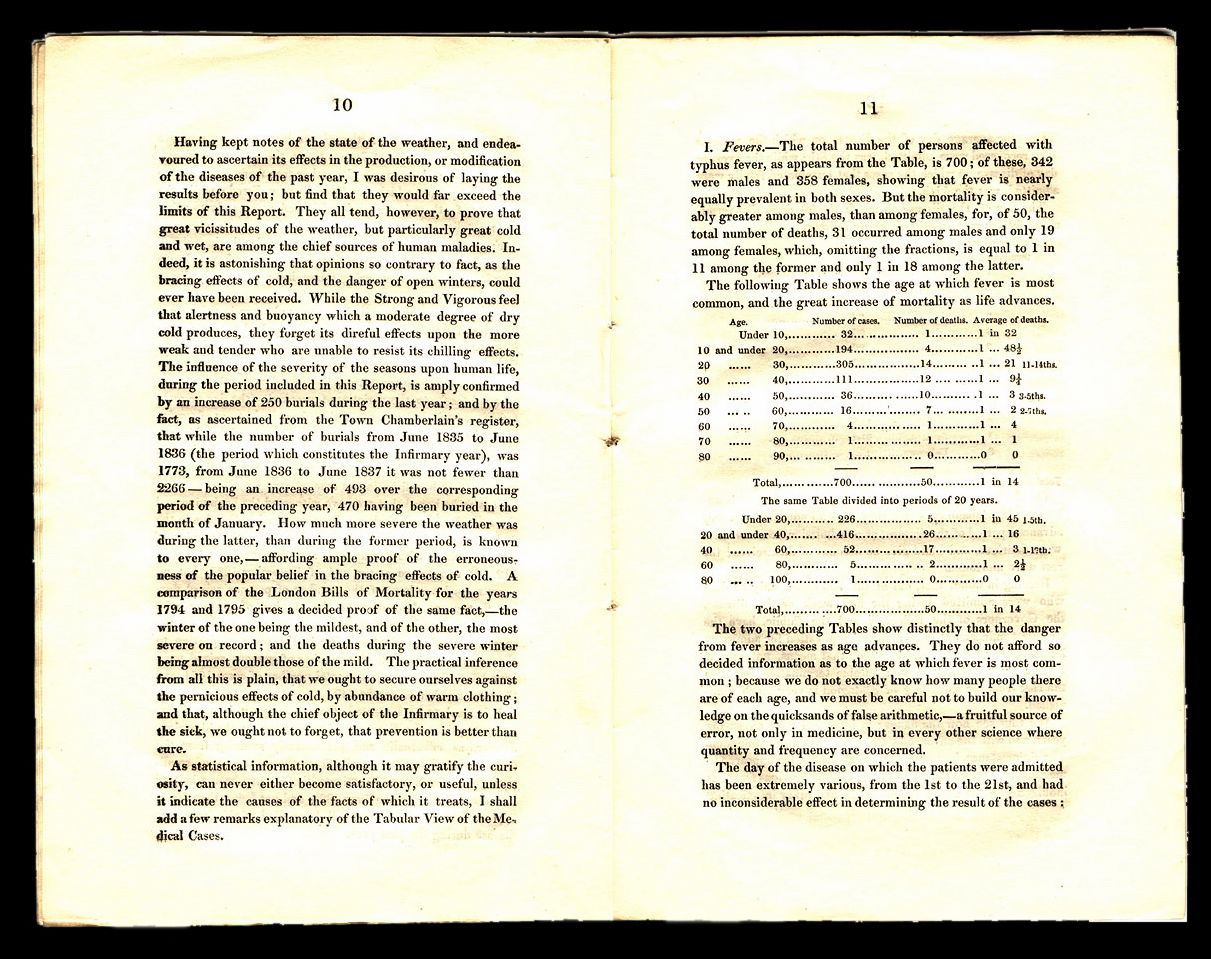Cholera was one of many contagious diseases which killed people in the 19th century, and in Dundee, when a number of Cholera epidemics swept through the town during the 1800s. Cholera bacteria (Vibrio cholerae) is transmitted by water or food which has been contaminated with the faeces of people who have the disease. Symptoms include severe diarrhoea and dehydration, which can lead to shock and death if left untreated
So why did Cholera spread so rapidly in the towns and cities of the 19th Century?
Dundee in the 19th century would have been smelly and crowded, with noisy markets and narrow cobbled streets traversed by horses and carts and littered with deposits of horse dung. Street-side butchers and fish vendors like those found at Butchers Row and Fish Street would often toss innards and unwanted flesh into street gutters, and householders threw refuse from tenement windows into the streets below.
In the early 1800s, toilets were outdoors and shared by many families living in the same tenement block, and few public washing facilities were available for bathing. Dung heaps were often situated too close to public wells and triggered complaints from citizens about their drinking water being contaminated with faeces.
Many families were poor and children were known to rummage for ‘rags and bone’ in people’s ‘dung heaps’ (places where bodily wastes were collected) under their houses.
Disease was rife. Many people believed that bad odours carried disease into their houses and their bodies, and complaints to the authorities were made about the sewer smells infiltrating homes. The poor disposal of all waste matter, inadequate sewerage and drainage facilities, and poor water supplies were all contributing to the escalating unsanitary conditions in a town with a growing jute industry and a rapidly growing population.
Although Police Commissioners were appointed in 1824 (with responsibility for lighting, paving and cleansing the town), it wasn’t until the latter half of the 19th century that sanitary improvements began to be made. Medical Officers of Health and Sanitary Inspectors were first appointed in the 1850s and 1860s, and with the introduction of the Dundee Police and Improvement Bill 2 in 1871, major improvements to drainage works, streets, houses and health were made.
Places like Butchers Row and Fish Street were demolished and the town wells were closed down in 1874 after piping was laid from the Lintrathen Reservoir to the town of Dundee.

